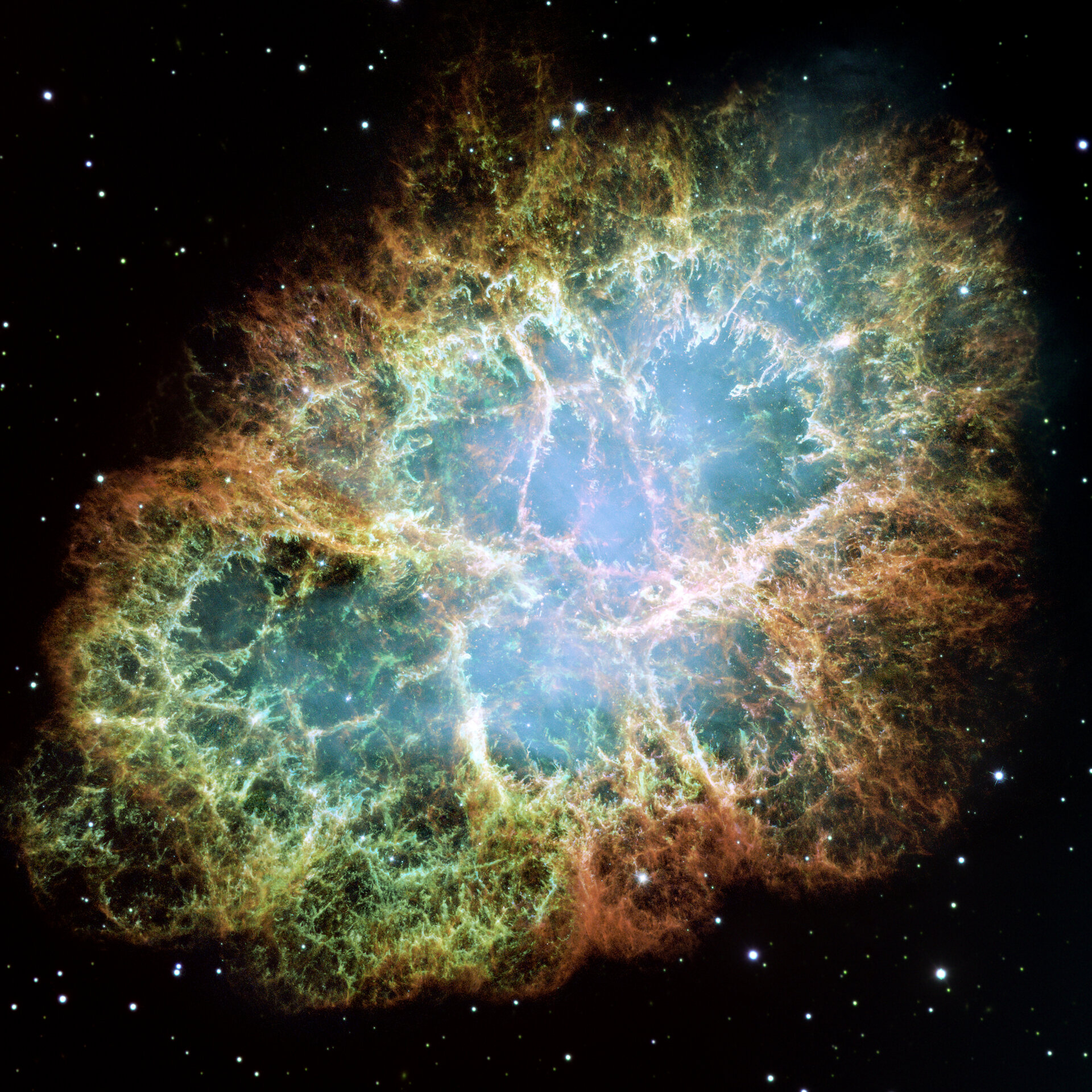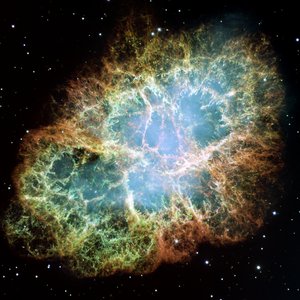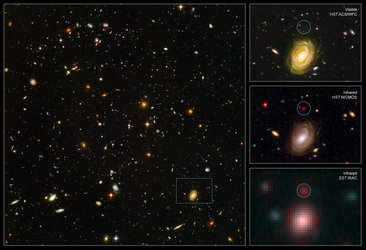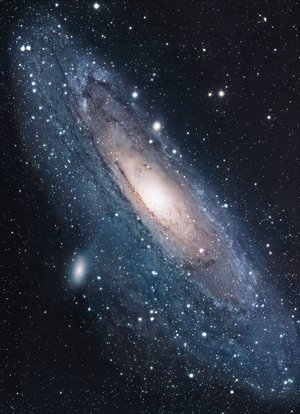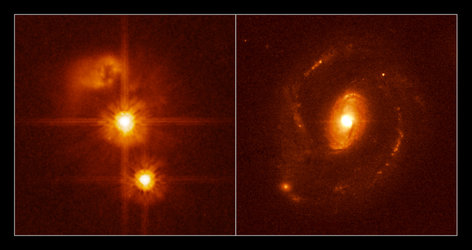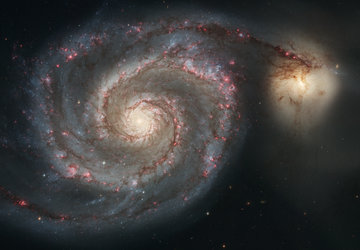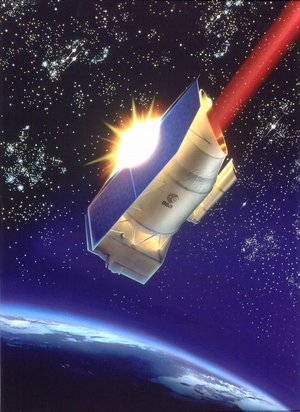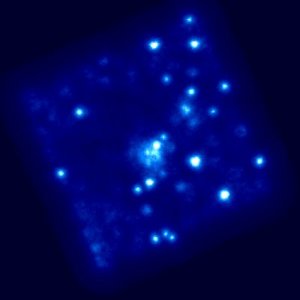The Crab Nebula: largest Hubble mosaic ever made
This new Hubble image, one of the largest ever produced by the Earth-orbiting observatory, gives the most detailed view so far of the entire Crab Nebula.
The Crab Nebula is possibly one of the most studied objects in astronomy, and one of the most intricately structured and highly dynamical objects ever observed.
This new Hubble image is the largest ever taken with the NASA/ESA Hubble Space Telescope’s Wide Field and Planetary Camera 2 (WPFC2). The image was assembled from 24 individual exposures taken in October 1999, January 2000, and December 2000, and is the highest resolution image of the entire Crab Nebula ever made.
The Crab Nebula is a six-light-year-wide expanding remnant of a star’s supernova explosion. Japanese and Chinese astronomers witnessed this violent event nearly 1000 years ago in 1054.
The filaments are the tattered remains of the star and consist mostly of hydrogen. The rapidly spinning neutron star embedded in the centre of the nebula, only barely visible in this Hubble image, is the dynamo powering the nebula’s eerie interior bluish glow.
The blue light comes from electrons whirling at nearly the speed of light around magnetic field lines from the neutron star. The neutron star, like a lighthouse, ejects twin beams of radiation that appear to pulse 30 times a second due to the neutron star's rotation. A neutron star is the crushed ultra-dense core of the exploded star.
The Crab Nebula derived its name from its appearance in a drawing made by Irish astronomer Lord Rosse in 1844, using a 36-inch telescope. When viewed by Hubble, as well as large ground-based telescopes such as the European Southern Observatory’s Very Large Telescope, the Crab Nebula takes on a more detailed appearance that yields clues into the spectacular demise of a star, 6500 light-years away.
The colours in the image indicate the different elements that were expelled during the explosion. Blue indicates neutral oxygen, green singly ionised sulphur and red doubly-ionised oxygen. The Hubble data have been superimposed on to images taken with ESO’s Very Large Telescope at Paranal Observatory, Chile.
Note to editors:
The Hubble Space Telescope is a project of international co-operation between ESA and NASA.
For more information:
Jesper Sollerman
Dark Cosmology Centre, Copenhagen, Denmark
Tel: +46 8 5537 8554
E-mail: jesper@astro.ku.dk
Allison Loll
Arizona State University, Tempe, USA
Tel: +1 480 965 0741
E-mail: allison.loll@asu.edu
Jeff Hester
Arizona State University, Tempe, USA
Tel: +1 480 965 0741
E-mail: jhester@asu.edu
Lars Lindberg Christensen
Hubble/ESA, Garching, Germany
Tel: +49 89 3200 6306
Mobile: +49 173 3872 621
E-mail: lars @ eso.org
Ray Villard
Space Telescope Science Institute, Baltimore, USA
Tel: +1 410 338 4514
E-mail: villard @ stsci.edu
The Hubble Space Telescope is a project of international cooperation between ESA and NASA.















 Germany
Germany
 Austria
Austria
 Belgium
Belgium
 Denmark
Denmark
 Spain
Spain
 Estonia
Estonia
 Finland
Finland
 France
France
 Greece
Greece
 Hungary
Hungary
 Ireland
Ireland
 Italy
Italy
 Luxembourg
Luxembourg
 Norway
Norway
 The Netherlands
The Netherlands
 Poland
Poland
 Portugal
Portugal
 Czechia
Czechia
 Romania
Romania
 United Kingdom
United Kingdom
 Slovenia
Slovenia
 Sweden
Sweden
 Switzerland
Switzerland
























